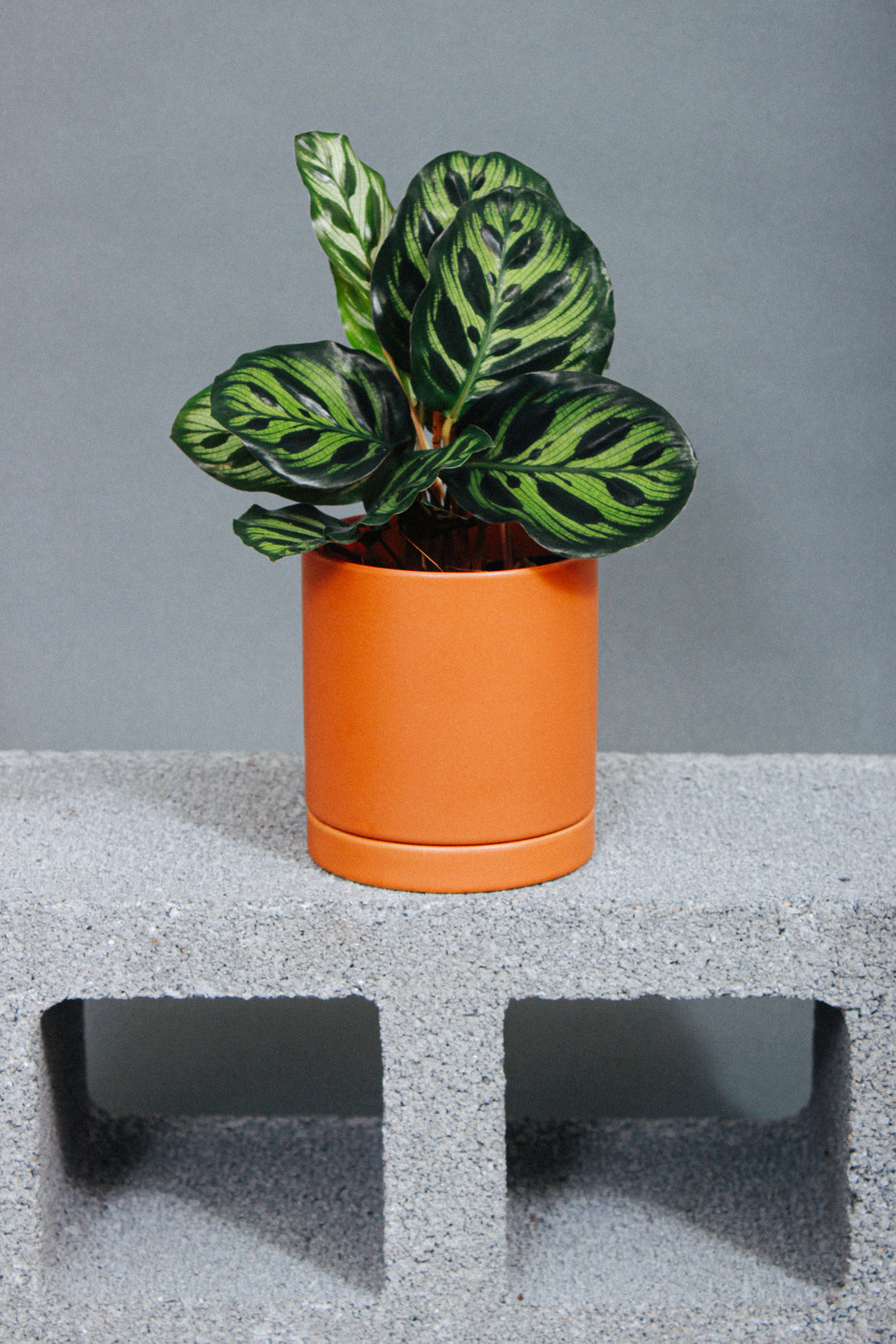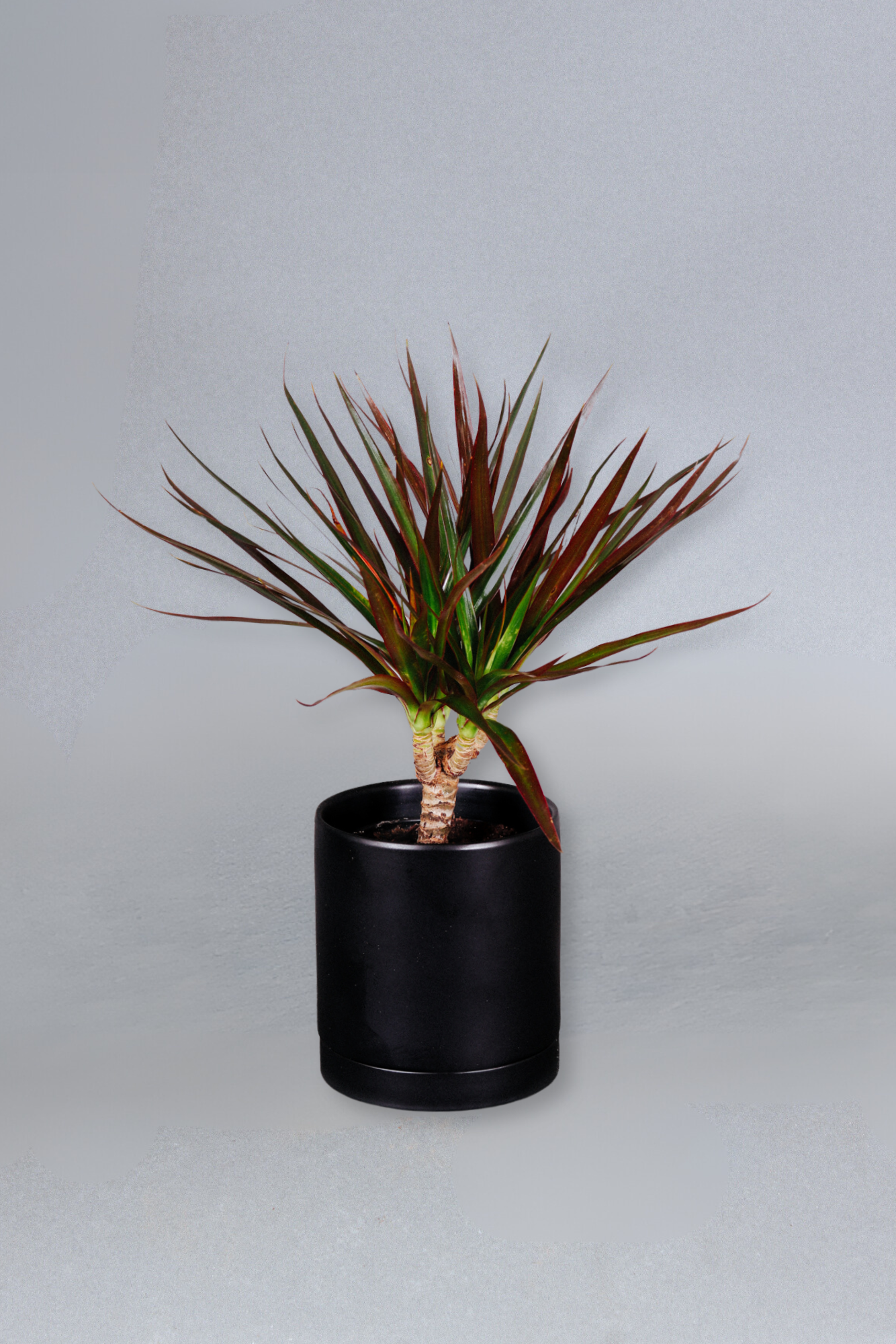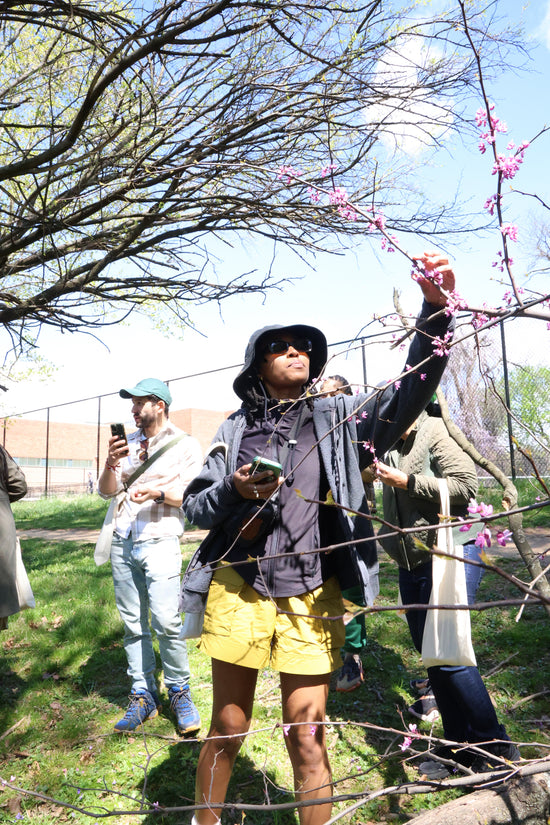The Peacock Plant is a member of the Calathea and Prayer Plant family, symbols of new beginnings, as they naturally practice “turning over a new leaf” each night as the plant closes itself in darkness, and reopens to meet the light. This fascinating plant is native to tropical Brazil, requiring that its care inside our home mimics its original climate.
Light
Place your Peacock Plant in medium-to-bright, indirect light. Direct sunlight will bleach and dry the leaves.
Water
Peacock Plants prefer consistently moist soil and should be watered when the top 1-2 inches of soil are dry. They are sensitive to water quality and would be happiest with one of the following water sources:
- Rain Water
- Spring Water
- Distilled Water
- Tap Water that has been left out overnight
Air
Peacock Plants prefer a humid environment at above-average household humidity and should be kept away from drafts. This makes them great additions to your kitchen or bathroom, however, you can increase humidity anywhere by:
- Misting your Peacock Plant with water in a spray bottle every few days
- Adding a Pebble Tray underneath your pot
- Placing a humidifier nearby
Placement
Finding a common ground between our plant’s needs and our own is a fulfilling experience. Placing a Peacock Plant on your bathroom counter, at your work desk, or in your meditation space serves as a great reminder that each day is renewed, given that these rooms offer the light and air needed for it to thrive. In addition, it will remove Carbon Monoxide from your air, purifying the oxygen you breathe in.
Propagation
The best way to propagate Peacock Plants is by dividing at the roots. Remove the plant from its pot when the soil is dry, and gently separate into 2 or more sections, depending on its size. The roots can withstand some damage as long as the plant is healthy and well developed. Pot your divisions into new soil and planters, following with normal care.
Seasonal Care
Depending on where you’re located, you may have to make some adjustments for these tropical plants during the winter season, such as moving them away from cold windows and dry heat from vents. Some other seasonal tips to keep in mind:
- Reduce watering in the winter while they rest, and resume consistent and increased watering during the warm, growing season.
- Increased humidity is especially important during the winter when our household air gets very dry. Follow the humidity tips mentioned above year-round.
- The best temperature range for these plants indoors is 65-85°.
Common Problems & Quirks
- If leaves are going brown or dry, check-in with the soil moisture, humidity levels, and/or water quality. Brown leaves can be a sign of underwatering or dry air.
- If leaves are going yellow, ensure the soil and pot offer adequate drainage, and that it is being watered after at least the top inch of soil has gone dry. Yellow leaves can be a sign of overwatering.
- Peacock Plants, and all Prayer Plants, are safe for pets!
- Dust its leaves and rotate the pot often so they experience even growth.
- Mimic their natural climate with thorough waterings on occasion, allowing excess water to drain out fully.








